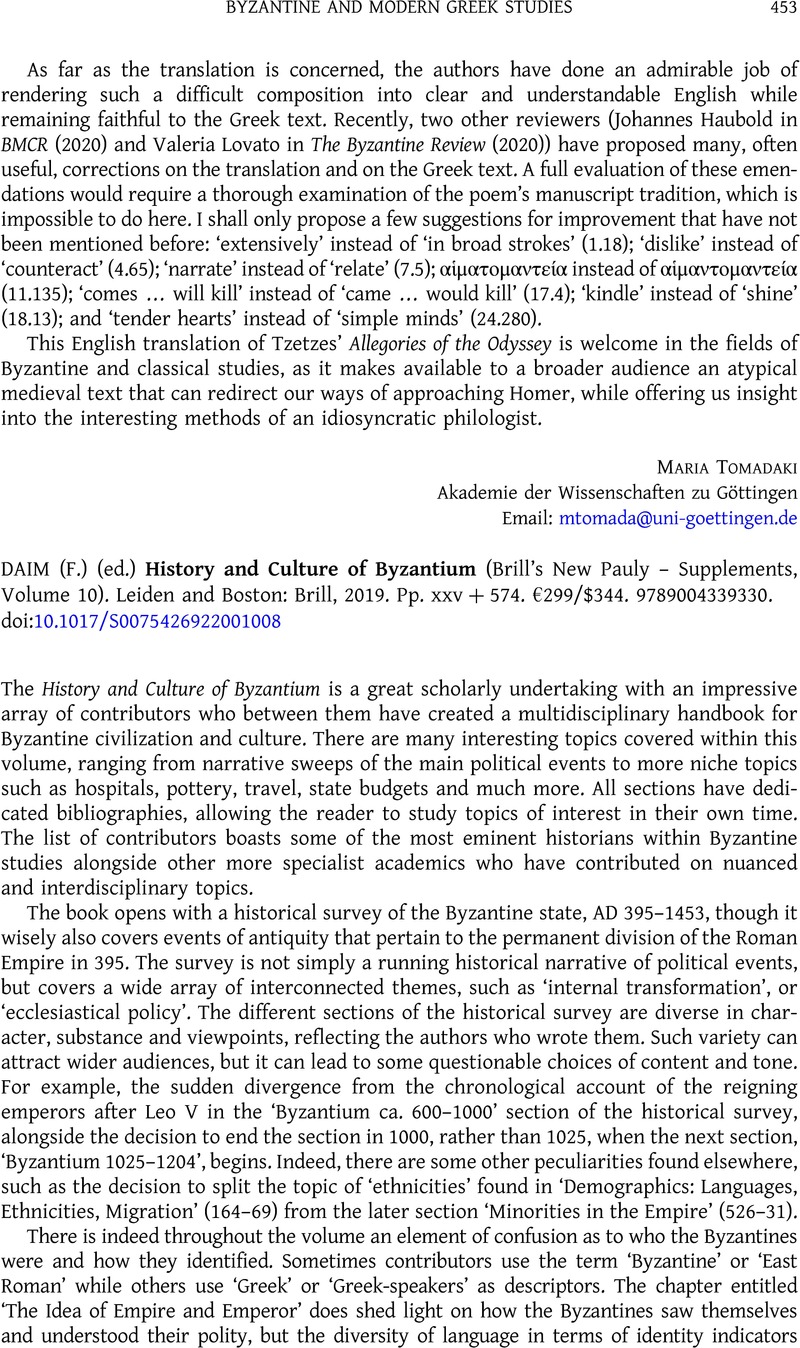No CrossRef data available.
Article contents
(F.) DAIM (ed.) History and Culture of Byzantium (Brill’s New Pauly – Supplements, Volume 10). Leiden and Boston: Brill, 2019. Pp. xxv + 574. €299/$344. 9789004339330.
Review products
(F.) DAIM (ed.) History and Culture of Byzantium (Brill’s New Pauly – Supplements, Volume 10). Leiden and Boston: Brill, 2019. Pp. xxv + 574. €299/$344. 9789004339330.
Part of:
Byzantine and modern Greek studies
Published online by Cambridge University Press: 11 April 2023
Abstract
An abstract is not available for this content so a preview has been provided. Please use the Get access link above for information on how to access this content.

Information
- Type
- Reviews of Books: Byzantine and Modern Greek Studies
- Information
- Copyright
- © The Author(s), 2023. Published by Cambridge University Press on behalf of the Society for the Promotion of Hellenic Studies

